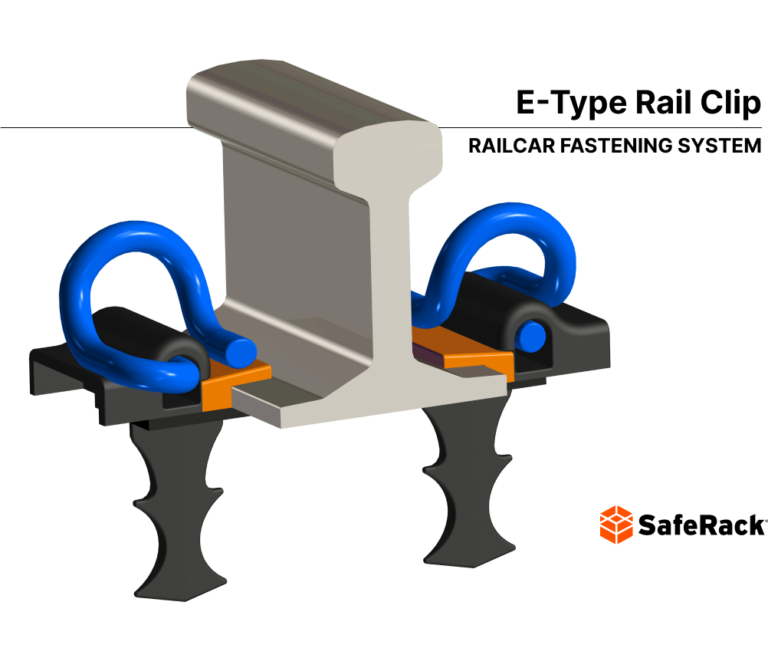An E-type rail clip, also known as an elastic rail fastening or E-clip, is a spring-loaded fastening device that provides permanent elastic clamping for rail systems. These clips mount to sleepers using four coach screws and double spring washers, creating a secure yet flexible connection. The E-clip design provides a firm grip on the rail while allowing controlled movement and vibration absorption.
Overview of Rail Fastening Systems
Rail fastening systems are comprehensive methods for securing rails to railroad infrastructure, dating back to 3838 BC with the Post Track in England. Modern systems employ various components including clips, spikes, bolts, and tie plates to maintain track stability and safety. These systems must balance rigid support with flexibility to accommodate thermal expansion and dynamic loading.
The elastic properties of E-type clips help reduce stress on rails, extending their operational lifespan. This flexibility is crucial for maintaining track geometry under varying loads and temperatures. Railroad safety encompasses both infrastructure integrity and worker protection, where SafeRack’s fall prevention solutions and OSHA-compliant access equipment ensure safe railcar loading operations.
Learn more: Core Components of a Rail Fastening System | Railroad Construction Facts

Frequently Asked Questions
E-clips are manufactured from spring steel that flexes under load while maintaining consistent clamping force. This elasticity allows the clip to accommodate rail movement from thermal expansion and train passage while continuously applying downward pressure, unlike rigid spikes that can loosen over time.
Yes, E-clips are widely used in high-speed rail systems due to their excellent vibration dampening and consistent clamping characteristics. Their ability to maintain proper rail positioning under dynamic loading makes them ideal for tracks experiencing speeds above 200 km/h where traditional rigid fasteners might fail.
E-clips typically permit 3-5mm of controlled vertical rail movement under load. This engineered flexibility helps absorb impact forces while preventing excessive displacement that could compromise track geometry or cause passenger discomfort.



